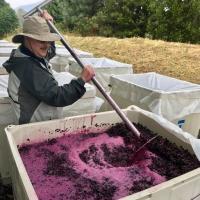-
Welcome to the eG Forums, a service of the eGullet Society for Culinary Arts & Letters. The Society is a 501(c)3 not-for-profit organization dedicated to the advancement of the culinary arts. These advertising-free forums are provided free of charge through donations from Society members. Anyone may read the forums, but to post you must create a free account.
All About Pasta
-
Similar Content
-
- 96 replies
- 20,566 views
-
- 255 replies
- 118,496 views
-
Music about food 1 2
By davebr,
- 25 replies
- 826 views
-
- 193 replies
- 37,098 views
-
- 110 replies
- 53,604 views
-
-
Recently Browsing 0 members
- No registered users viewing this page.





Recommended Posts